Compensatory Increase of Transglutaminase 2 Is Responsible for Resistance to mTOR Inhibitor Treatment
- PMID: 26872016
- PMCID: PMC4752276
- DOI: 10.1371/journal.pone.0149388
Compensatory Increase of Transglutaminase 2 Is Responsible for Resistance to mTOR Inhibitor Treatment
Expression of concern in
-
Expression of concern: Compensatory increase of transglutaminase 2 is responsible for resistance to mTOR inhibitor treatment.PLoS One. 2020 Jan 15;15(1):e0227851. doi: 10.1371/journal.pone.0227851. eCollection 2020. PLoS One. 2020. PMID: 31940416 Free PMC article. No abstract available.
Abstract
The mechanistic target of rapamycin complex 1 (mTORC1) plays a crucial role in controlling cell growth and homeostasis. Deregulation of mTOR signaling is frequently observed in some cancers, making it an attractive drug target for cancer therapy. Although mTORC1 inhibitor rapalog-based therapy has shown positive results in various pre-clinical animal cancer studies, tumors rebound upon treatment discontinuation. Moreover, several recent clinical trials showed that the mTORC1 inhibitors rapamycin and rapalog only reduce the capacity for cell proliferation without promoting cell death, consistent with the concept that rapamycin is cytostatic and reduces disease progression but is not cytotoxic. It is imperative that rapamycin-regulated events and additional targets for more effective drug combinations be identified. Here, we report that rapamycin treatment promotes a compensatory increase in transglutaminase 2 (TGM2) levels in mTORC1-driven tumors. TGM2 inhibition potently sensitizes mTORC1-hyperactive cancer cells to rapamycin treatment, and a rapamycin-induced autophagy blockade inhibits the compensatory TGM2 upregulation. More importantly, tumor regression was observed in MCF-7-xenograft tumor-bearing mice treated with both mTORC1 and TGM2 inhibitors compared with those treated with either a single inhibitor or the vehicle control. These results demonstrate a critical role for the compensatory increase in transglutaminase 2 levels in promoting mTORC1 inhibitor resistance and suggest that rational combination therapy may potentially suppress cancer therapy resistance.
Conflict of interest statement
Figures
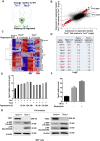
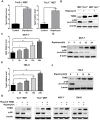
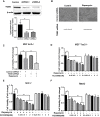

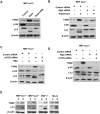
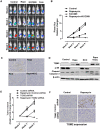
Similar articles
-
AZD2014, an Inhibitor of mTORC1 and mTORC2, Is Highly Effective in ER+ Breast Cancer When Administered Using Intermittent or Continuous Schedules.Mol Cancer Ther. 2015 Nov;14(11):2508-18. doi: 10.1158/1535-7163.MCT-15-0365. Epub 2015 Sep 10. Mol Cancer Ther. 2015. PMID: 26358751
-
Vascular tumors have increased p70 S6-kinase activation and are inhibited by topical rapamycin.Lab Invest. 2013 Oct;93(10):1115-27. doi: 10.1038/labinvest.2013.98. Epub 2013 Aug 12. Lab Invest. 2013. PMID: 23938603
-
mTORC1 inhibition is required for sensitivity to PI3K p110α inhibitors in PIK3CA-mutant breast cancer.Sci Transl Med. 2013 Jul 31;5(196):196ra99. doi: 10.1126/scitranslmed.3005747. Sci Transl Med. 2013. PMID: 23903756 Free PMC article.
-
The Enigma of Rapamycin Dosage.Mol Cancer Ther. 2016 Mar;15(3):347-53. doi: 10.1158/1535-7163.MCT-15-0720. Epub 2016 Feb 25. Mol Cancer Ther. 2016. PMID: 26916116 Free PMC article. Review.
-
Targeted Inhibition of Rictor/mTORC2 in Cancer Treatment: A New Era after Rapamycin.Curr Cancer Drug Targets. 2016;16(4):288-304. doi: 10.2174/1568009616666151113120830. Curr Cancer Drug Targets. 2016. PMID: 26563881 Review.
Cited by
-
Crebl2 regulates cell metabolism in muscle and liver cells.Sci Rep. 2019 Dec 27;9(1):19869. doi: 10.1038/s41598-019-56407-w. Sci Rep. 2019. PMID: 31882710 Free PMC article.
-
The Gαh/phospholipase C-δ1 interaction promotes autophagosome degradation by activating the Akt/mTORC1 pathway in metastatic triple-negative breast cancer.Aging (Albany NY). 2020 Jul 1;12(13):13023-13037. doi: 10.18632/aging.103390. Epub 2020 Jul 1. Aging (Albany NY). 2020. PMID: 32615541 Free PMC article.
-
mTOR function and therapeutic targeting in breast cancer.Am J Cancer Res. 2017 Mar 1;7(3):383-404. eCollection 2017. Am J Cancer Res. 2017. PMID: 28400999 Free PMC article. Review.
-
Inhibition of Transglutaminase 2 but Not of MDM2 Has a Significant Therapeutic Effect on Renal Cell Carcinoma.Cells. 2020 Jun 16;9(6):1475. doi: 10.3390/cells9061475. Cells. 2020. PMID: 32560270 Free PMC article.
-
Tissue transglutaminase expression is necessary for adhesion, metastatic potential and cancer stemness of renal cell carcinoma.Cell Adh Migr. 2018 Mar 4;12(2):138-151. doi: 10.1080/19336918.2017.1322255. Epub 2017 Jul 14. Cell Adh Migr. 2018. PMID: 28498731 Free PMC article.
References
Publication types
MeSH terms
Substances
LinkOut - more resources
Full Text Sources
Other Literature Sources
Medical
Miscellaneous

